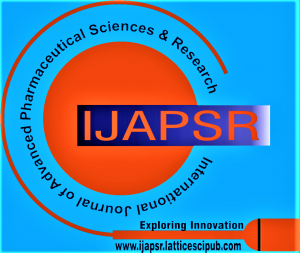![]()
Advancements in Peptide Vectors for Cancer Therapy and Tumor Imaging: A Comprehensive Review
Nasser Thallaj
Prof. Dr. Nasser Thallaj, Department of Pharmaceutical Chemistry and Drug Quality Control, Faculty of Pharmacy, Al-Rachid Privet University, Damascus, Syria.
Manuscript received on 30 June 2024 | Revised Manuscript received on 13 July 2024 | Manuscript Accepted on 15 August 2024 | Manuscript published on 30 August 2024 | PP: 29-49 | Volume-4 Issue-5, August 2024 | Retrieval Number: 100.1/ijapsr.E404904050824 | DOI: 10.54105/ijapsr.E4049.04050824
Open Access | Editorial and Publishing Policies | Cite | Zenodo | OJS | Indexing and Abstracting
© The Authors. Published by Lattice Science Publication (LSP). This is an open-access article under the CC-BY-NC-ND license (http://creativecommons.org/licenses/by-nc-nd/4.0/)
Abstract: The objective of this work is to synthesize novel peptide vectors for cancer therapy and tumor imaging. Cancer is a complex disease characterized by uncontrolled cell proliferation and the ability of cancer cells to evade programmed cell death. It poses a significant health problem globally, with increasing incidence rates observed in both industrialized and developing countries. Early detection of cancer is crucial for effective treatment, and various techniques such as observation, palpation, biopsies, and medical imaging have been employed for this purpose. However, these methods have limitations in terms of early detection, precision, and availability. Therefore, the development of new treatments and diagnostic methods is a pressing need in cancer research. This study focuses on the synthesis of peptide vectors that can serve as effective tools for cancer therapy and tumor imaging. Peptide vectors offer several advantages, including their ability to specifically target cancer cells, their potential for multivalency, and their capacity for non-viral vectorization. The research aims to design and synthesize peptide vectors that target αVβ3 integrin, a protein overexpressed in tumor cells and associated with tumor neo-angiogenesis. The vectors will incorporate the cyclodecapeptide scaffold RAFT as a structural framework and will be functionalized with the -RGD- ligand, known for its affinity to αVβ3 integrin. The incorporation of specific features such as oxime ligation and disulfide bridges will enhance the stability and functionality of the vectors. Additionally, the use of FRET (Förster resonance energy transfer) will enable imaging capabilities for tumor detection. Overall, this work seeks to contribute to the advancement of cancer therapy and tumor imaging by synthesizing novel peptide vectors with targeted specificity and imaging capabilities. The successful development of these peptide vectors could potentially lead to improved early detection, targeted drug delivery, and more effective treatment strategies for cancer patients.
Keywords: Anti-cancer Therapy, Tumour Imaging, Tumour neo-angiogenesis, αVβ3 integrin, Non-viral Vectorization, Cyclodecapeptide Scaffold RAFT, -RGD- Ligand, Multivalency, Oxime Ligation, Disulfide Bridge, FRET
Scope of the Article: Pharmaceutical Analysis
